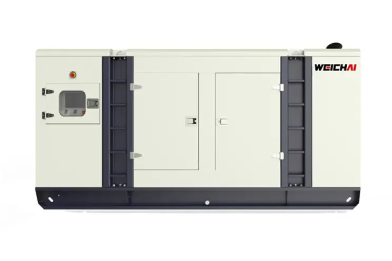Did you know that businesses lose an average of $5,000-10,000 per minute during unexpected power outages? For facility managers, operations directors, and business owners, selecting the right Diesel Generator Set is not just about buying equipment—it's about ensuring business continuity, protecting critical assets, and maximizing return on investment. With numerous options available and technical considerations to evaluate, choosing the perfect power solution can seem overwhelming. This comprehensive guide will walk you through the essential factors and professional considerations to help you select the ideal Diesel Generator Set that meets your specific business requirements while ensuring reliability, efficiency, and long-term value.
Understanding Your Power Requirements: The Foundation of Selection
1. Conduct a Comprehensive Load Assessment
Before considering any Diesel Generator Set, you must accurately determine your power needs:
Calculate total connected load: List all equipment and systems requiring backup power
Identify starting currents: Some equipment requires 3-6 times their running current during startup
Prioritize critical loads: Separate essential systems from non-essential equipment
Consider future expansion: Allow for 20-25% additional capacity for business growth
2. Determine Your Runtime Requirements
Short-term backup (2-4 hours) vs. extended operation (24+ hours)
Fuel storage considerations based on required runtime
Automatic transfer switch requirements for seamless power transition
Load banking needs for regular testing and maintenance
Insert load calculation table: "Power Requirement Assessment Worksheet" - ALT text: diesel-generator-set-power-requirement-calculation-guide
Key Technical Specifications to Evaluate
• Power Output and Capacity
Standby vs. Prime Power ratings: Understand the difference and choose appropriately
Voltage requirements: 120/240V for small applications, 480V for industrial use
Phase configuration: Single-phase for small operations, three-phase for industrial applications
Frequency stability: ±0.5% frequency regulation for sensitive equipment
• Engine and Alternator Quality
Engine brand reputation: Cummins, MTU, Perkins, or other tier-1 manufacturers
Alternator type: Brushless design for reduced maintenance
Cooling system: Radiator size and cooling capacity for your environment
Fuel system: Common rail technology for better efficiency and performance
Application-Specific Considerations
For Data Centers and IT Facilities
100% power redundancy with parallel systems
Advanced control systems for seamless transfer
Enhanced cooling systems for continuous operation
Emissions compliance for indoor/outdoor installation
For Manufacturing and Industrial Applications
High starting torque capabilities for heavy machinery
Durable construction for harsh environments
Fuel efficiency for cost-effective extended operation
Easy maintenance access for minimal downtime
For Healthcare and Critical Facilities
NFPA 110 compliance for life safety applications
Ultra-quiet operation for patient comfort
Redundant systems for maximum reliability
Remote monitoring capabilities
When standard solutions don't meet your specific needs, consider working with a customized generator sets supplier who can tailor solutions to your exact requirements.
Fuel Efficiency and Environmental Factors
Fuel Consumption Considerations
Load-dependent consumption: Generators are most efficient at 70-80% load
Tier 4 compliance: Latest emissions standards for environmental compliance
Fuel storage options: Base tank, external tank, or day tank configurations
Alternative fuel capabilities: Biodiesel compatibility considerations
Environmental and Regulatory Compliance
Noise level requirements: Urban vs. rural installation considerations
Emissions regulations: EPA, EU Stage V, or local compliance requirements
Permitting process: Understanding local regulations and approval requirements
Sustainability considerations: Carbon footprint and environmental impact
Reliability and Maintenance Requirements
Built-in Reliability Features
Automatic shutdown systems for protection against failures
Self-diagnostic capabilities for proactive maintenance
Weatherproof enclosures for outdoor installation
Vibration isolation for sensitive applications
Maintenance and Service Considerations
Preventive maintenance schedule and service requirements
Parts availability and service support availability
Remote monitoring capabilities for proactive maintenance
Service contract options for peace of mind
For businesses requiring immediate solutions, some suppliers offer customized generator sets in stock that can be quickly configured to meet specific requirements.
Vendor Selection and Support Services
Choosing the Right Supplier
Industry experience: Look for suppliers with 10+ years of experience
Technical expertise: Certified engineers and technical staff
Project references: Similar successful installations
Warranty terms: Comprehensive coverage and support
Support Services Evaluation
Installation services: Turnkey project capabilities
Training programs: Operator and maintenance training
Emergency support: 24/7 technical assistance
Parts availability: Local inventory and supply chain
Budget Considerations and Total Cost of Ownership
Initial Investment vs. Long-term Costs
Equipment cost: Generator set and necessary accessories
Installation expenses: Civil works, electrical connections, and commissioning
Operating costs: Fuel consumption and routine maintenance
Lifecycle costs: 10-15 year total cost of ownership analysis
Return on Investment Considerations
Downtime prevention: Value of continuous operations
Energy efficiency: Fuel cost savings through proper sizing
Maintenance costs: Impact of reliability on service expenses
Resale value: Quality equipment retains better value
Making the Final Decision: A Step-by-Step Checklist
Pre-Purchase Verification
Load analysis completed and verified
Site assessment conducted for installation requirements
Technical specifications matched to application needs
Vendor qualifications verified and references checked
Financial Considerations
Total budget allocated including installation
Operating costs projected for 3-5 years
Warranty terms reviewed and understood
Service agreements evaluated and compared
Implementation Planning
Installation timeline established and confirmed
Training requirements identified and scheduled
Maintenance plan developed and documented
Testing protocol established for commissioning
Conclusion and Next Steps
Selecting the perfect Diesel Generator Set requires careful consideration of multiple factors, from technical specifications to operational requirements and budget constraints. The right choice will provide reliable power protection, operational efficiency, and long-term value for your business.
Remember that the most expensive generator is the one that fails when you need it most. Investing time in proper selection and working with experienced professionals will ensure you get a solution that meets your needs today and supports your growth tomorrow.
Ready to Find Your Perfect Power Solution? Our team of certified power experts has helped over 3,000 businesses select and implement optimal generator solutions. [Contact us today for a free power assessment and personalized recommendation]. Let us help you choose the perfect Diesel Generator Set for your specific business needs.
Table of Contents
- Understanding Your Power Requirements: The Foundation of Selection
- Key Technical Specifications to Evaluate
- Application-Specific Considerations
- Fuel Efficiency and Environmental Factors
- Reliability and Maintenance Requirements
- Vendor Selection and Support Services
- Budget Considerations and Total Cost of Ownership
- Making the Final Decision: A Step-by-Step Checklist
- Conclusion and Next Steps

